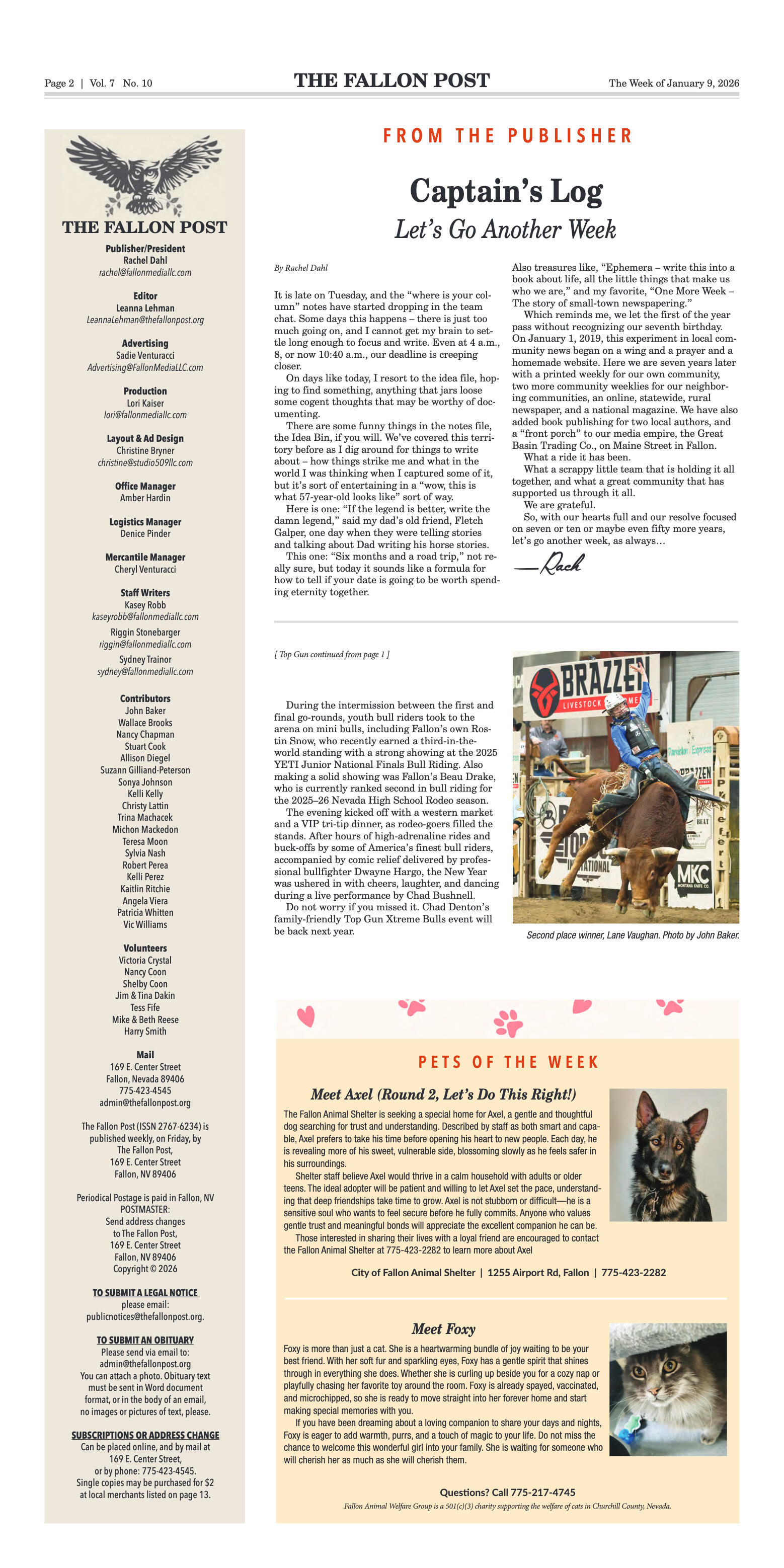Sometimes, a culinary disaster for a youngster under ten can spark the development of a wonderful chef. This was my mother in Vallejo, California, in about 1912, and little did she know that she would marry a man from a community that specialized in raising turkeys. She was child number five of six. Her mother had passed away when she was two. Her father had given her the money to buy a Thanksgiving turkey masterpiece along with instructions to roast it. She found a nice turkey, all plucked and clean. It looked great, and into the oven it went. As it cooked, it emitted a horrible smell and was inedible. It seems that you were supposed to clean the innards of your turkey—no turkey for that Thanksgiving.
Turkeys were raised in Churchill County as early as the 1860s, but in a limited manner, some reaching the Comstock, Reno, and Carson. Chickens and eggs also provided the area children and housewives with extra funds or were traded to local businesses for needed items. The local company then would send the eggs to Tonopah or Reno for sale.
It wasn’t until 1911 that the possibility of commercial turkey production started to emerge among the farmers. Within just a few years, it was found that the high altitude minimized the losses from diseases by approximately 15%. The birds thrived on eating the insects in the alfalfa fields along with being supplemented with grains. Large-scale quality turkey production in Churchill County became a reality.
Like today, the turkeys were harvested primarily in the fall for the Thanksgiving and Christmas celebrations. After they were plucked, cleaned, and weighed, they were sent throughout the U.S., especially to fancy restaurants. In 1914, while keeping 2,500 for breeding purposes, Churchill County farmers sold 7,000 turkeys.
Over 50 farmers joined together not only to market their birds as meat but also to develop larger strains of turkeys, some of which were sent to other farmers so they, too, could raise them. Minnie P. Blair started and managed the "Atlasta Turkey” operation, which made sales not only to local turkey raisers but to people coast to coast as well as Alaska, Hawaii, Canada, and Mexico. By 1927, over three hundred turkey growers joined to market their turkeys, half for Thanksgiving and half for Christmas. The dressed Thanksgiving turkeys brought in more than $100,000 and filled over eleven rail cars. One Los Angeles market purchased the entire ten boxcars of Christmas turkeys.
Back to the little girl and her Thanksgiving catastrophe. Mom married a young man raised in Churchill County and was a real asset to his business in Reno because she could put on an elegant meal and look elegant, too, with a 45-minute call that there were extra people coming to dinner. Her meals were excellent, and she never missed on a turkey.
During family Thanksgivings in later years, we heard reminiscences of the wonderful Churchill County turkeys, especially from those who had lived there for years, if they were in farming or not. It was part of the pride in their community. This reminds us to say a thank you, in the present, to a farmer or rancher for the food they provide for us. It will be appreciated.
Note: Most of the history of poultry in Churchill County was received from the book “Turn This Water into Gold,” in chapter twelve of the first edition. The book is interesting reading. You can find it at the Churchill County Library or Museum.
Sonya Johnson has farmed and raised cattle in the Lahontan Valley for 64 years. The daughter of HD Sanford, she raised five daughters with the skills she learned from her beautiful, resourceful mother. Sonya has deep ties to Churchill County; her great-grandmother was the second white woman in Churchill County. She is 85 and is active in the Churchill County Farm Bureau.












































Comment
Comments